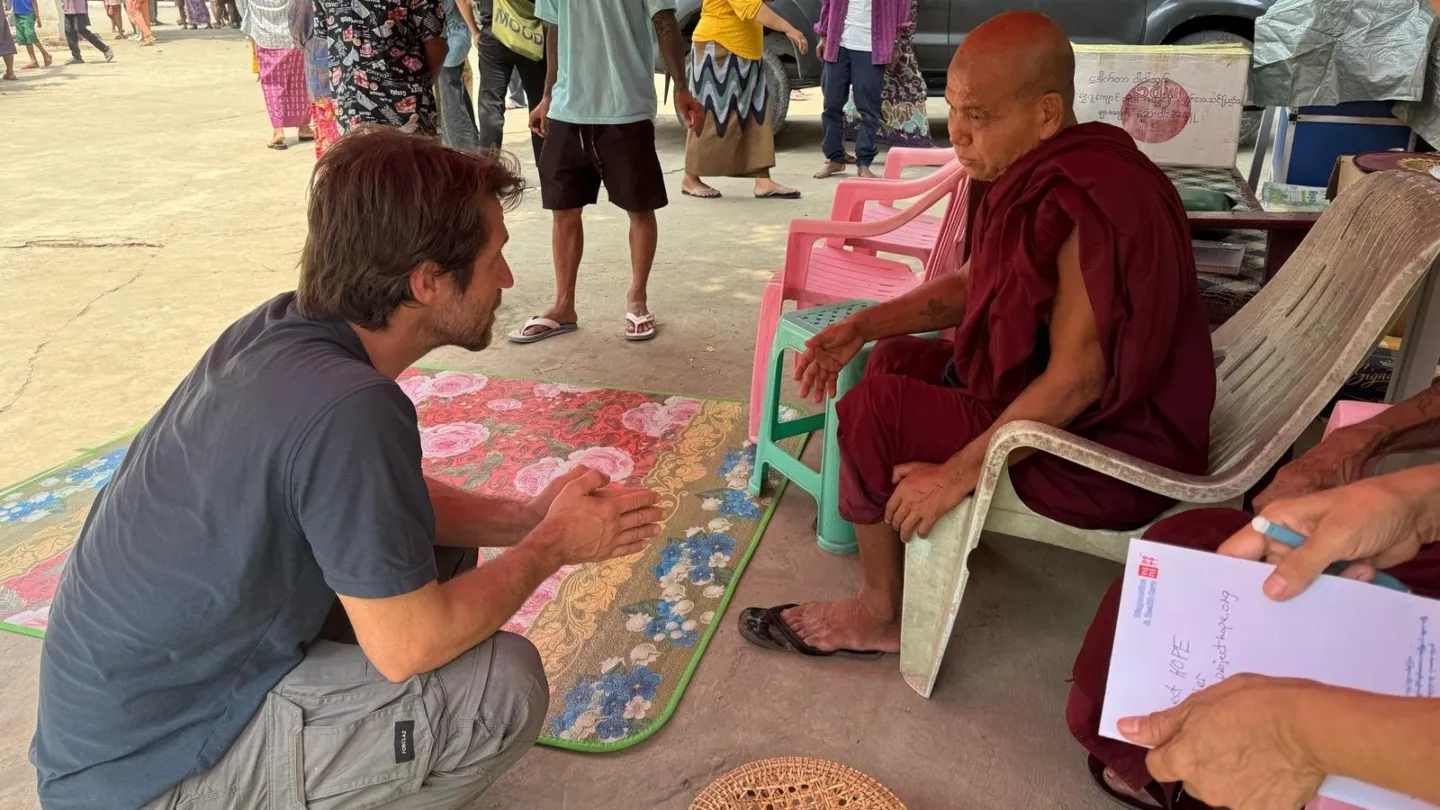Myanmar Earthquake: How to Help
Project HOPE is responding to the 7.7-magnitude earthquake in Myanmar, which has caused catastrophic damage, a significant loss of life, and created urgent humanitarian needs.

>> Read our latest situation report
>> Our statement on mobilizing a response
>> Update Statement on our work in Myanmar
What We Know
- A deadly 7.7-magnitude earthquake has struck Myanmar with early reports pointing to catastrophic damage
- Prior to the earthquake, nearly 20 million people were in need of humanitarian assistance and over 3 million people were internally displaced
- WASH services, medication, and food are severely disrupted
- The mental health impacts of earthquakes can be severe for children and leave a lasting impact
Following the devastating 7.7-magnitude earthquake that struck Myanmar on March 28, 2025, Project HOPE quickly deployed an emergency response team to address immediate health and humanitarian needs. With more than 3,725 people killed and at least 17 million people within the country impacted and 9 million severely affected, the earthquake has exacerbated an already dire humanitarian crisis.
In Mandalay, multiple buildings, a bridge, and a monastery have collapsed. The disaster may be compounded in lowland areas after reports of a dam having burst near Mandalay.
Mandalay General Hospital is operational and has been receiving such a high influx of patients that dozens are being treated in the parking lot in over 100-degree temperatures. A shortage of supplies has been reported at hospitals near the epicenter of the earthquake and a state of emergency has been put in place across six central states of Myanmar including Sagaing, Mandalay, Bago, Easter Shan, Mayway, and Naypyidaw.
The local government has requested assistance from the international community and the United Nations system has already activated a response. The earthquake was felt as far as China and Thailand, where assessments of potentially damaged buildings are being conducted. In Bangkok, an apartment tower collapsed, trapping over 100 construction workers below. Rescue efforts in Bangkok continued through the night.
“This is a historic earthquake in a country that has long had a history of adversity — where millions were already displaced and tens of millions were already in need of humanitarian aid — making the consequences of this disaster even more catastrophic.”
– Arlan Fuller, Director of Emergency Response
Project HOPE’s Response
As part of its ongoing response, Project HOPE is working with trusted local partners to deliver lifesaving aid. So far, Project HOPE has:
- Delivered water, sanitation, and hygiene (WASH) support through the distribution of over 1,000 hygiene kits, the construction of 20 emergency latrines, and the installation of two mobile water filtration systems, each providing 5,000 liters/hour of clean water.
- Operated Mobile Medical Units in Nyaungshwe and Southern Shan, where teams, so far, have treated 993 patients in just four weeks, with additional units planned for launch in Sagaing in May. These units ensured access to basic medical consultations, treatment, health education, and referral services, while monitoring for disease outbreaks during the critical early recovery phase.
- Provided stipends to local health workers to deliver Psychological First Aid (PFA) within their own communities in Southern Shan to address the mental health needs of survivors.
- Been in collaboration with WHO and local civil society organizations to procure and distribute bed nets, medicines, hygiene kits, and additional non-food items in the Mandalay area.
Project HOPE has responded to several earthquake disasters in recent years including the 2023 Earthquake in Türkiye and Syria, the 2023 earthquake in Morocco, and the 2022 earthquake in Indonesia.



